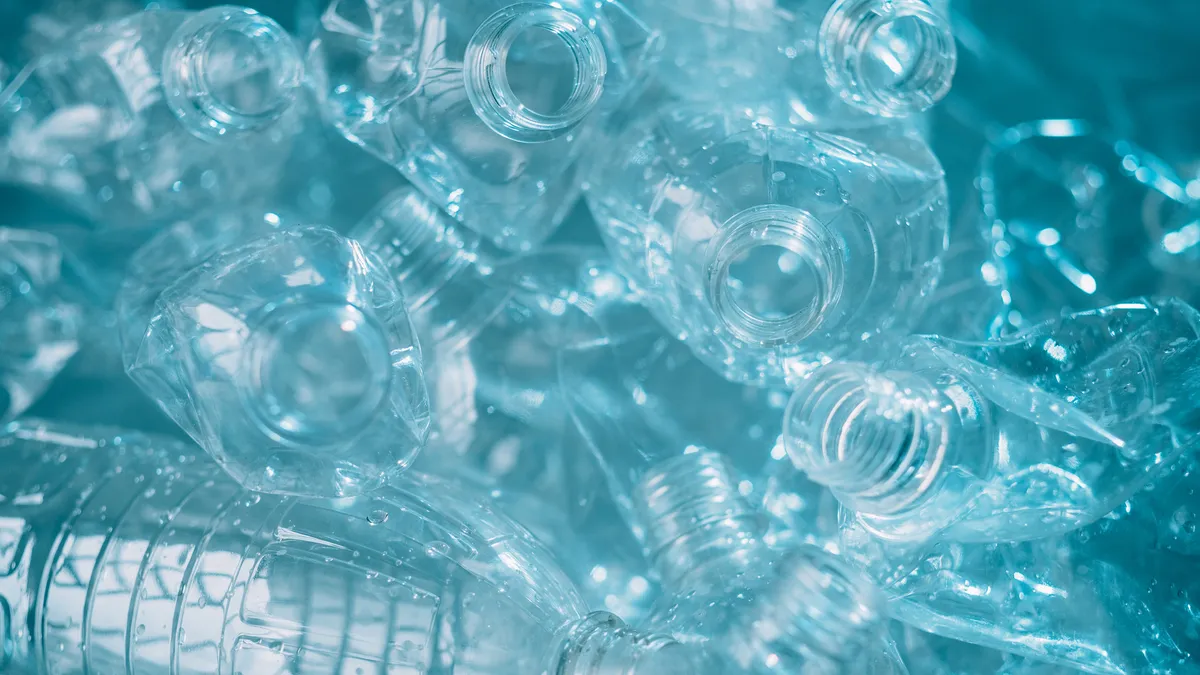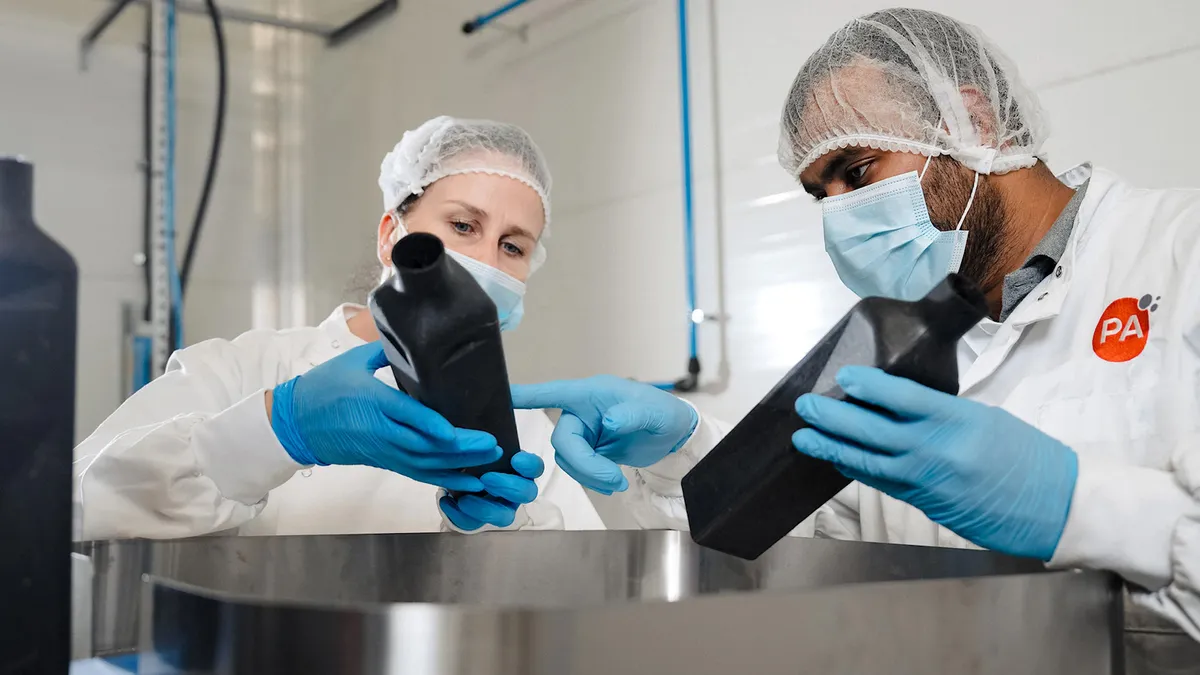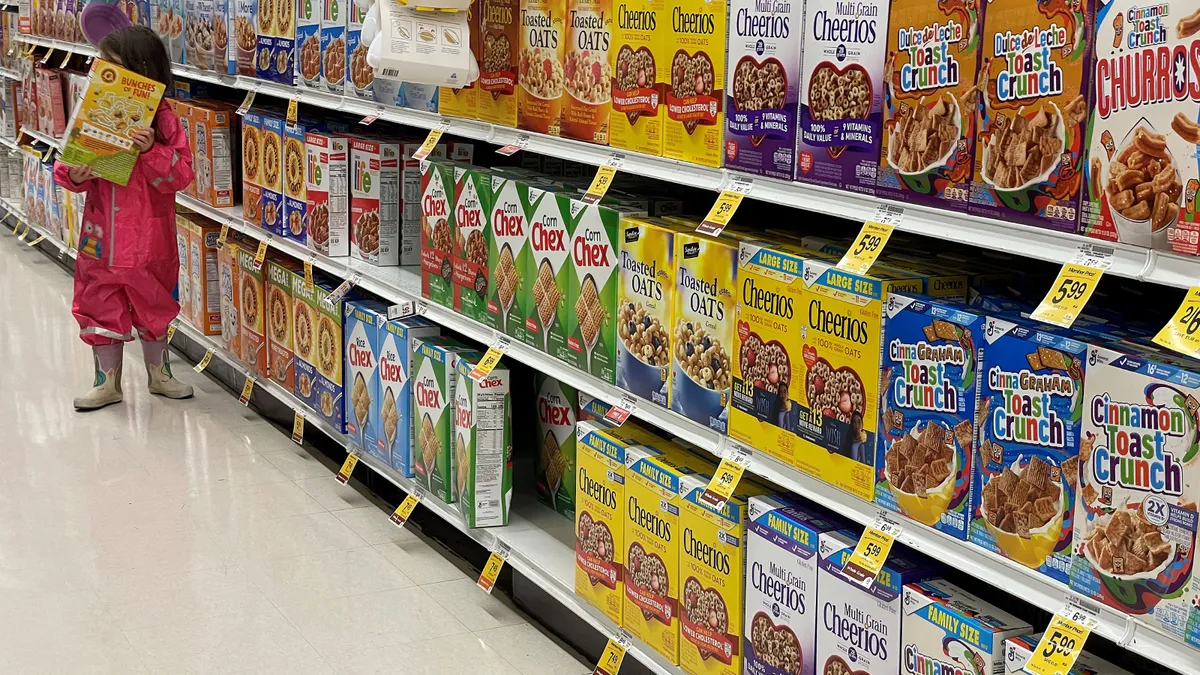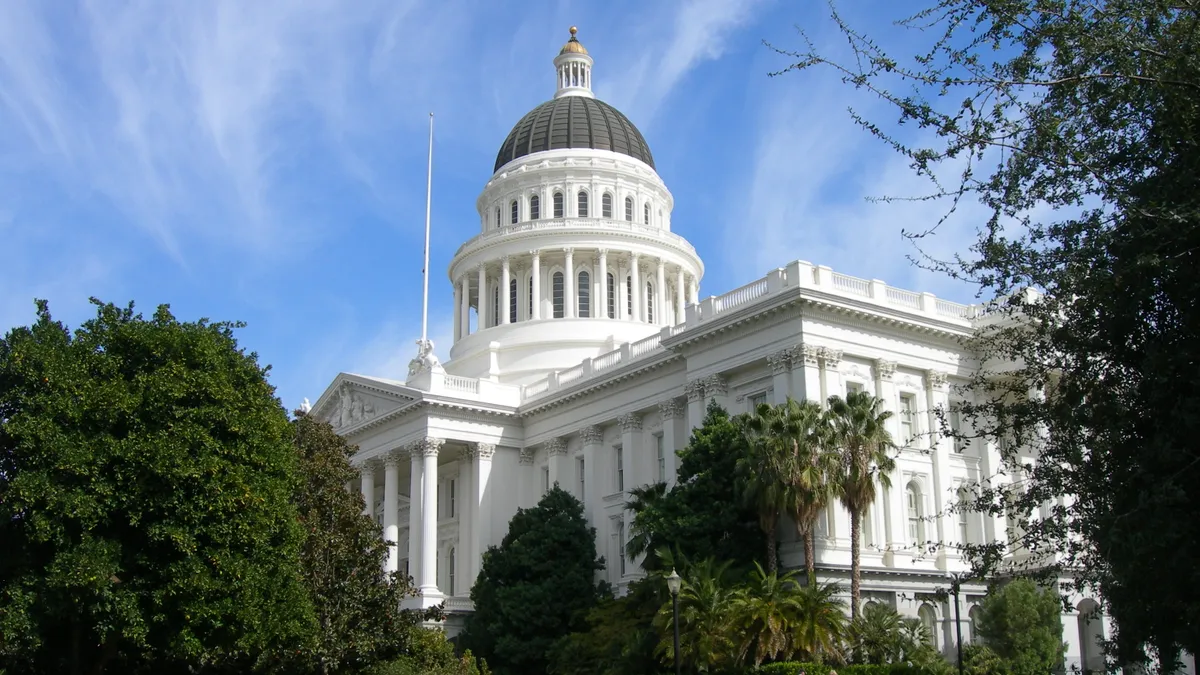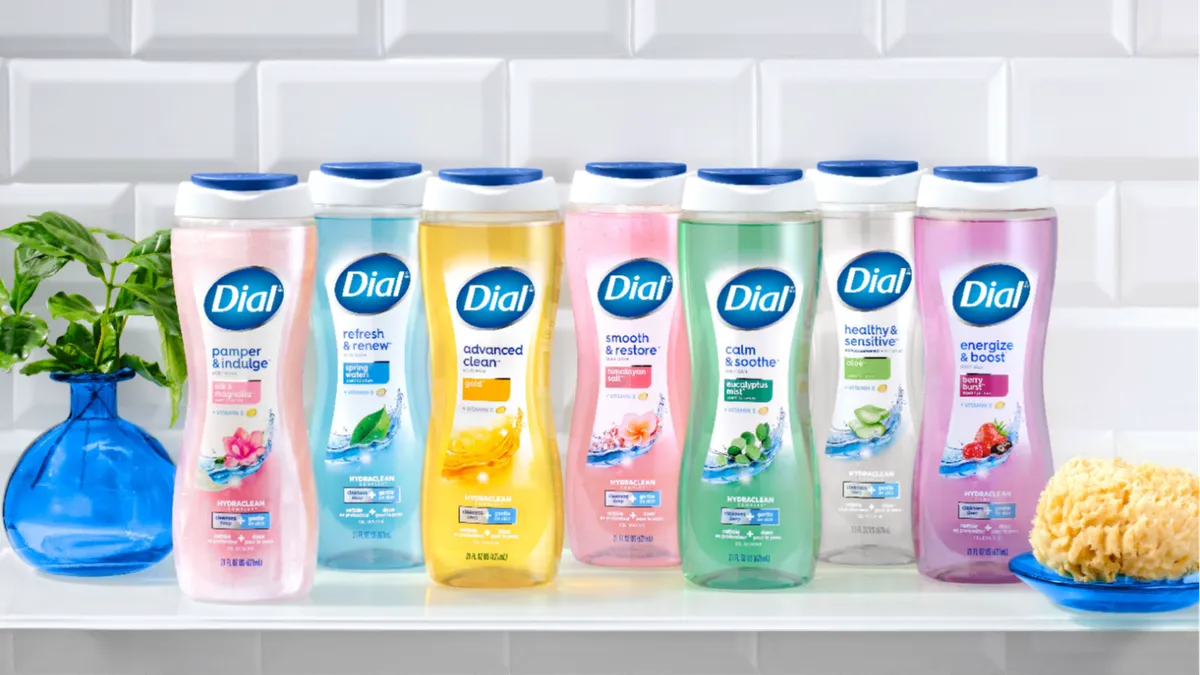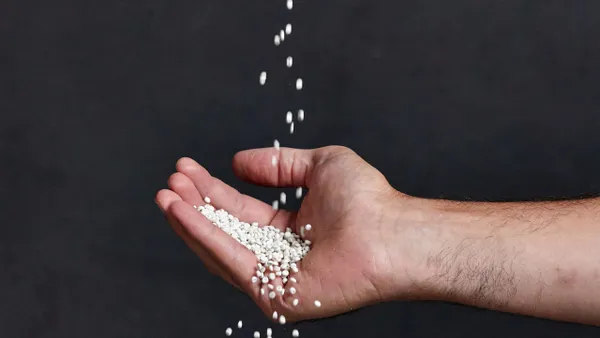Mass balance accounting offers flexibility in how the amount of recycled plastics in packaging is reported. Just how flexible the practice should be is the heart of a debate between companies, industry groups and sustainability advocates.
Though other industries deploy mass balance to allow flexibility in supply chains, the premise is relatively new in the plastic packaging industry.
Different ideas about the practice — and if or how it could be used without potentially risking confusing customers about the nature of the products they buy — were highlighted in recent comments submitted to the Federal Trade Commission over coming updates to the Green Guides, the agency’s guidance on environmental marketing claims. Depending on how the FTC decisions over sustainability language shake out this year, experts say that some participants of existing certification systems might be at risk of a lawsuit from the agency.
Several nongovernmental certification groups offer their own definitions of mass balance. The systems vary in which actions make it acceptable for brands to place slogans like “supports recycled content” or “contains recycled plastic” on their goods.
Packaging that advertises this certified status is increasingly common on store shelves — showing up in candy wrappers, flexible packaging and more — and is starting to play a greater role in recycling campaigns that brands have long promised to launch.
Complex accounting
The term “mass balance” found its way into the manufacturing industry for the first time with the Forest Stewardship Council. In the 1990s, the organization debuted a certification for sustainably sourced wood products with a system that allowed mass balance. Other certification systems for goods like cocoa, palm oil and coffee eventually adopted the concept too.
In all these goods and plastics, the concept operates as a type of accounting system.
“It acts more like a checkbook,” said Ross Bergman, director of the Recycled Material Standard, a mass balance certification systems offered by the nonprofit GreenBlue. “As long as you manage your inputs, the outputs are more allocated or assigned.”
At its most general level, mass balance allows brands to place labels on their goods based on how much plastic waste entered a production system. Depending on how an organization defines the term, mass balance recycling does not always mean there is postconsumer resin in every, or any, item bearing the “recycled” label that shoppers see on the shelf.
How can plastic enter a treatment system, not show up in every final product, but still lead to recycled-adjacent labels? The answer is that mass balance turns production inputs into credits that can be allocated to any number of items.
If, for example, two production plants make PET bottles for a single brand and just one plant has recycled PET input, mass balance accounting lets the brand pool input “credits” across both locations. Only half of the bottles that end up on store shelves will contain recycled resin. But instead of labeling every other package as having recycled content, the brand spreads the recycled content claim across all the bottles, maybe even saying the average recycled percentage per item.
Some nongovernmental organizations and companies believe it’s greenwashing to say that a package has recycled content when it may not. Suggestions of false advertising were a point of contention between participants in a roundtable discussion covering mass balance held by the National Institute of Standards and Technology in May 2021.
Differing opinions on whether mass balance techniques would allow truthful advertising or what kinds of parameters should be exist were a common theme in the Green Guides comment period that closed last April. The FTC also hosted a workshop in May about recyclability claims. Final decisions should be released this year.
Plastics industry trade groups are supportive of using mass balance for these applications, and some companies say that mass balance has to be allowed so that brands can make claims about resin derived through chemical recycling. That process, sometimes referred to as advanced recycling, refers to technologies that use heat and other reactions to break plastics into molecules like the ones in virgin materials.
Advocates of mass balance, such as Mars, said in comments to the FTC that manufacturers can’t possibly know how many of the molecules in any given bottle are recycled if the chemically recycled material is the same substance as new plastic and the two are jumbled together before any molding happens. In their view, assigning a recycled status based on system inputs is the only option unless recycled and virgin resins were kept in separate production streams — something supporters like the Consumer Brands Association say isn’t feasible.
A similar sentiment shows up in other industries turning to mass balance, said Kimberly Carlson, an associate professor and land systems scientist who focuses on tropical agriculture at New York University. For example, a palm oil processing plant might juggle traditional and sustainably sourced products.
“If that mill wants to segregate those two things, then it would usually have to do that serially,” Carlson said. “It doesn’t make much sense from a processing standpoint.”
Mass balance, then, lets the brand claim some level of support for sustainable production, even if it’s not possible to know exactly how much of each oil source appears in each grocery item.
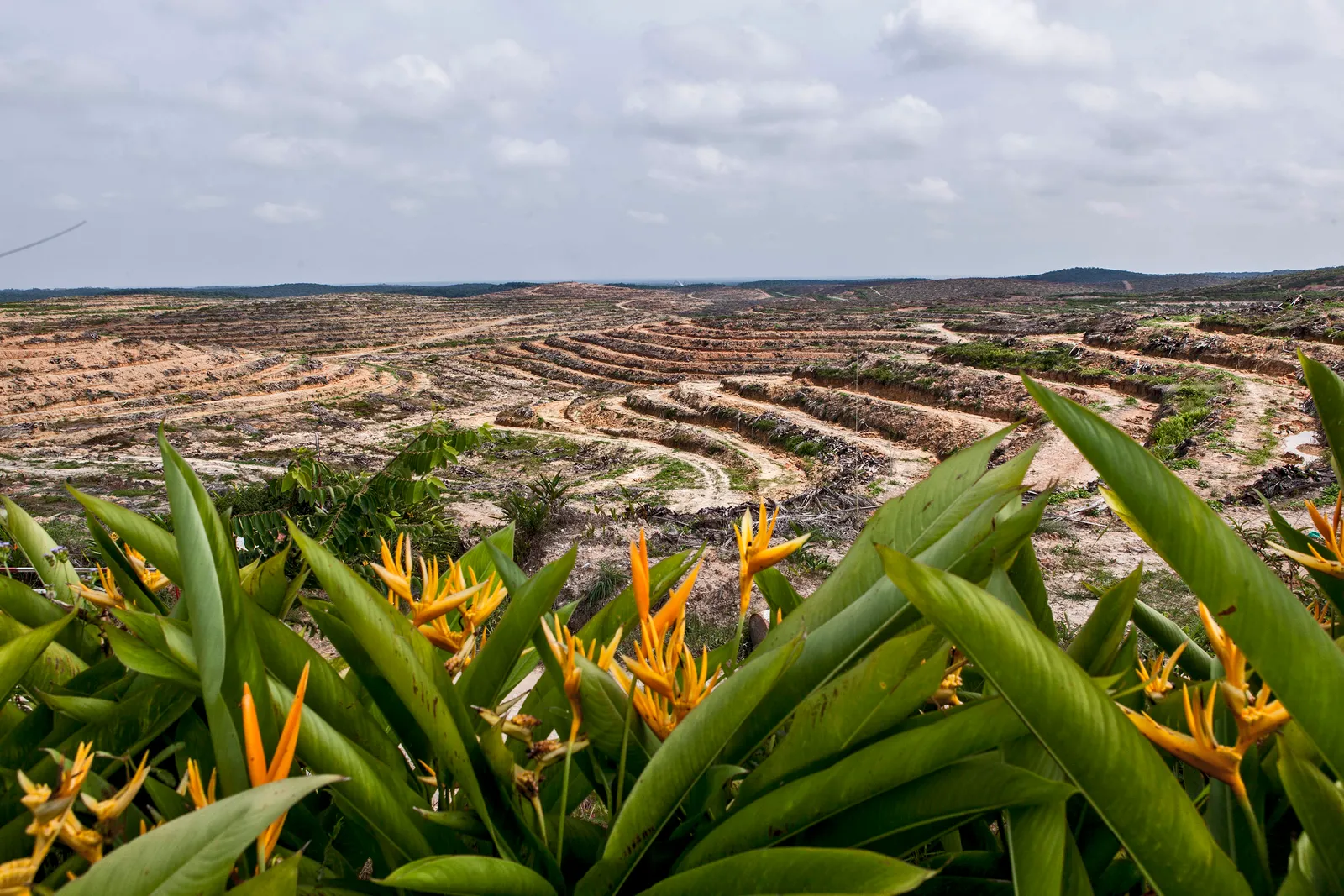
The fuel debate
Plastics differ from palm oil, cocoa, or coffee in one major way: Chemical recycling plants can turn plastic into fuel.
The combustible liquid has become a major dividing line among mass balance recycling supporters. Differing opinions are visible in the range of certification options available. According to NIST, at least six organizations offer third-party standards that allow brands to use logos, seals or claims for production methods.
How these standards define key terms can vary widely depending on where they operate. “Inputs” and “credits” could be tracked by any number of units, like tonnage or energy value, for example. Since mass balance is a kind of accounting there also needs to be an accounting period for when inputs and credits accumulate, which could be weeks or months. What counts as “recycled material” could be limited to only postconsumer material or it could also include postindustrial.
Crucially, what counts as an “output” could also be limited to physical plastic goods — or it could include fuel.
One of the chemical recycling subtypes is pyrolysis, which creates the aptly named pyrolysis oil. The molasses-like goo can become a fuel or it can be further refined into polyethylene and polypropylene. ISCC Plus, a prominent version offered by the International Sustainability & Carbon Certification, allows participants to create fuel and label their goods as having a certain percentage within the “recycled plastic ISCC certified mass balance approach.”
Under this approach, for example, a brand showing the organization that 30% of its feedstock is recycled plastic can also claim that its accounting system includes a pyrolysis plant and resin refining infrastructure. Like other mass balance accounting systems, the ISCC approach lets brands move “recycled” content claims to any approved output. The 30% recycled plastic claim can go entirely to resin — even if some or most of the precursor pyrolysis oil goes to fuel and not plastic.
Some critics contend that fuel production is the only way any brand participating in the ISCC Plus standards could claim double-digit recycled content in their goods.
A recent report from Zero Waste Europe concluded that contaminants in recycled plastic likely prevent more than 2% of the waste resin that enters pyrolysis from ultimately becoming repolymerized. Jan Dell, a chemical engineer and founder of nonprofit group The Last Beach Cleanup, agrees. Dell said that if a product claims anything more than 2% recycled content and is approved by ISCC Plus then somewhere in the brand’s approved accounting system plastics are being turned into fuels or other products at high enough volumes to make up the gap.
The fuel conversion likely happens with petroleum companies, Dell said, who then sell packaging brands the right to claim the “recycled” fuel credits in a transaction that ISCC does not monitor. ISCC says that its ISCC Plus program does not allow certified organizations to sell credits.
If companies lost the ability to refer to plastic-based fuel as a kind of recycling to generate credit in a mass balance system — a limit the Canadian government is considering for recycled content labeling rules — then Dell believes they would abandon mass balance claims altogether.
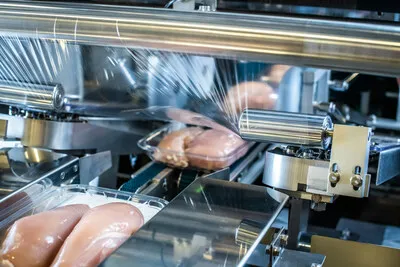
Stefan Gärtner, a senior project manager at ISCC, said the organization can’t speak to all the details from a technology perspective in terms of what processing equipment can handle when it comes to recycled resins.
“For ISCC, it's important if such a mass balance approach was chosen that it's transparent throughout the supply chain and clear to all system users and customers of such a supply chain,” said Gärtner.
The option to claim recycled content when fuel is an approved output is considered a step too far for some brands and industry groups. In Green Guides comments, Mars specifically stated it supports “recycled content” claims stemming from chemical recycling so long as fuel or energy products are excluded.
The American Sustainable Business Network feels similarly. The coalition, which includes brands like Ben & Jerry’s, Etsy, King Arthur Flour and Seventh Generation, supports mass balance in other cases.
For example, some of the brands already use mass balance when adhering to FSC paper standards or palm oil sourcing, said Martin Wolf, an advisor to ASBN on circularity and toxics. Wolf is also the director of sustainability and authenticity at Seventh Generation.
ASBN also supports mass balance if it were applied in mechanical recycling settings or to low-energy de- and repolymerization systems, including certain PET treatments like enzymatic hydrolysis. Any mass balance system that allows pyrolysis oil to become fuel, however, worries ASBN.
Mass balance in practice
Concerns over public perception motivated at least one certification system to opt for different user requirements. The RMS certification system is the only one that lets participants adopt all of the mass balance parameters that the U.S. Plastics Pact approves.
Those who want the RMS seal can’t count fuel made as recycled content — instead, allocations get deducted.
GreenBlue, which started developing RMS at the request of its member companies in 2019, ultimately coalesced around the idea that products bearing “recycled content” labels while plastics became fuels was deceptive to customers. Bergman said this was in part because of stances from the Green Guides and the International Organization for Standardization that said it would be misleading to consider combusted materials “recycled.”
RMS labels that participants can put on packaging are also more restrained than what ISCC Plus allows. For mass balance systems, brands can choose labels that say “mix supporting recycled plastic.” Percentages can only be used in mass balance labels if it’s in a business-to-business setting.
One of the brands that places RMS’ rectangular mass balance logos on its goods is Graham Packaging.
The company primarily makes rigid plastic packaging out of PET, HDPE and polypropylene for food, beverage, nutrition, homecare and industrial products. Graham also runs a postconsumer HDPE mechanical recycling plant. It pursued RMS certification for the recycling facility and one of its manufacturing locations.
Vice President of Sustainability Richa Desai said that, with RMS approval, Graham can now make a type of packaging in two locations and claim recycled content across both of them even if the recycled resin is only physically present at one manufacturing plant. The company said it’s important to have flexibility to incorporate different levels of PCR due to technical limitations for certain products and also to account for distances between manufacturing sites and its recycling facility.
The RMS-certified production plant could also make two bottle types simultaneously with a batch of recycled resin and split recycled credits between the designs.
“That is the whole point of mass balance — you can allocate different percentages without actually physically incorporating the same amount of PCR that you're making claims for,” Desai said.
The company also said in a subsequent email that it supports the mass balance approach because it allows for more "transparency and third-party verification throughout the value chain.”
Though mass balance lets brands spread recycled content claims, Desai doesn’t necessarily think the accounting system will encourage all brands to increase the amount of postconsumer material they use. “There are very many technical nuances that go into adding PCR,” she said. Instead, Desai said a key benefit is allowing brands flexibility to incorporate more PCR at certain locations and in some cases avoid greenhouse gas emissions from transporting material throughout the country.
Graham’s ability to grant RMS labels to products hinges on working with other RMS-certified facilities. Though the company can provide its own RMS-certified HDPE resin, other suppliers need to be part of the certification system if Graham were to outsource and make similar product claims.
Assuming other companies join certification systems, credits could start to detach entirely from companies and end up sold on their own within the market.
“It's not a far step to understand that you could, through certification and tracking the flow of material, essentially separate that claim completely from the material,” Bergman said.
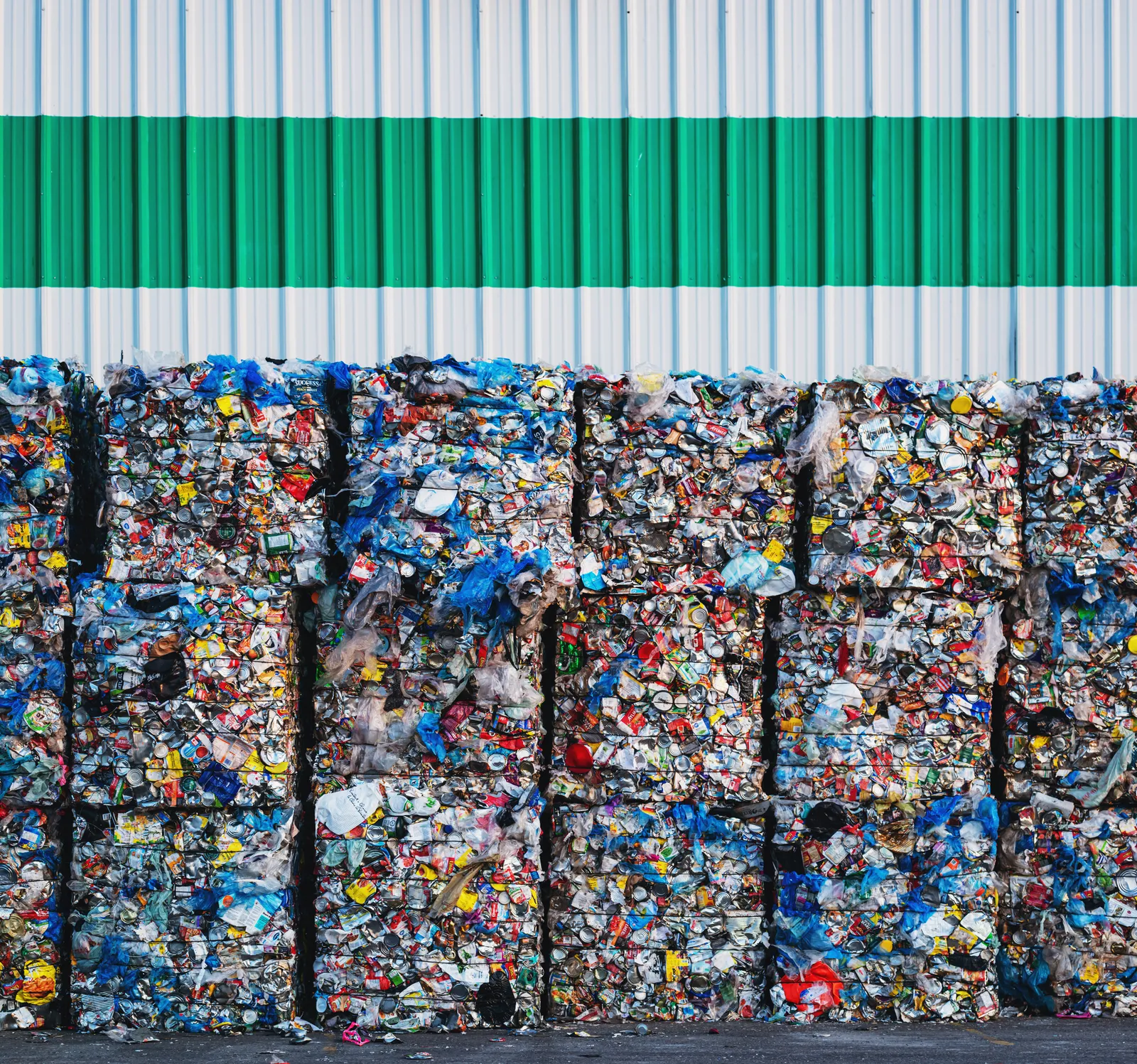
Selling off the rights to a claim in a mass balance system already happens in the palm oil industry, said Carlson. If a palm oil plantation commits to a sustainability certification but has no customers nearby that are interested in such a product, selling off the credits allow the sustainability work to be recognized even if the oil feeds into a mill that doesn’t want the claim.
Though palm oil, plastic’s predecessor in the mass balance world, might soon reach a point where mass balance is obsolete in part because some nations want 100% compliance to sustainability standards. By the end of 2024, for example, the European Union will require all imported palm oil and other goods to be completely deforestation-free. Other nations have set no sustainability standards for the oil.
Carlson said the growth of a large, mandatory certification market — largely the EU and a few other European countries — could prompt a change. This means companies that previously claimed mass balance was needed to avoid setting up parallel zero deforestation and conventional palm oil production lines might benefit financially from converting entirely to certified materials.
In the plastic packaging industry, however, mass balance is expected to remain relevant for the foreseeable future.
Mechanical recycling has limits in terms of how many times a resin can be reused. Chemical recycling, even though infrastructure is expanding, remains nascent. Until the overall system evolves to a place where manufacturers can efficiently replace virgin plastic throughout their supply chain, experts say that packaging companies and their customers will still be looking for accounting flexibility in their recycled content claims.


